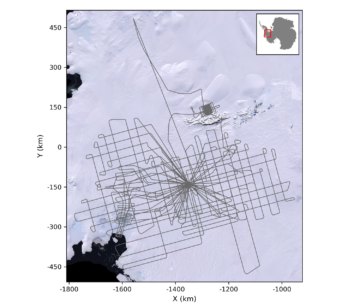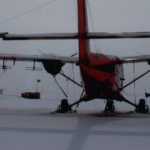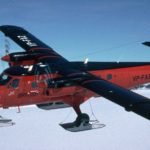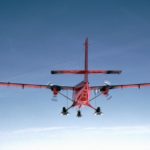BBAS-AGASEA: Aerogeophysical survey of the Pine Island Glacier and Amundsen Sea Embayment, West Antarctica
- Start date
- 11 December, 2004
- End date
- 21 January, 2005
The BBAS science programme was a British Antarctic Survey-funded project, part of the wider BBAS-AGASEA collaboration between BAS, the University of Texas Institute for Geophysics (UTIG), and the U.S. National Science Foundation (NSF).
The aim of the programme was to conduct a systematic geophysical survey of the entire Amundsen Sea embayment using comparable airborne survey systems mounted in Twin Otter aircraft. The BBAS-part of the wider BBAS-AGASEA programme focused on acquiring aero-geophysical data over the poorly surveyed Pine Island Glacier to better understand its subglacial topography and assess its potential instability in the light of climate change. In total, this field campaign collected ~35,000 line-km of aero-geophysical data (including gravity, magnetics and radar data) over the Pine Island Glacier Basin and upper Thwaites Glacier.

List of airborne geophysics datasets available for this project includes:
Aeromagnetic data:
- Ferraccioli, F. (2020). Processed line aeromagnetic data over the Pine Island Glacier basin (2004/05 season) [Data set]. UK Polar Data Centre, Natural Environment Research Council, UK Research & Innovation. https://doi.org/10.5285/485E6B9B-D033-441F-8C98-B2D0EFCB1D63
Gravity data:
- Jordan, T., & Ferraccioli, F. (2020). Processed line aerogravity data over the Pine Island Glacier basin (2004/05 season) [Data set]. UK Polar Data Centre, Natural Environment Research Council, UK Research & Innovation. https://doi.org/10.5285/E6621111-5965-44DF-B40C-125F466CEB5C
Bed and surface elevation picks data:
- Corr, H., Ferraccioli, F., & Vaughan, D. (2020). Processed bed elevation picks from airborne radar depth sounding across the Pine Island Glacier basin (2004/05 season) [Data set]. UK Polar Data Centre, Natural Environment Research Council, UK Research & Innovation. https://doi.org/10.5285/3ADB739A-9EDA-434D-9883-03AB092CABAE
Radar data:
- Corr, H., Ferraccioli, F., & Vaughan, D. (2021). Processed airborne radio-echo sounding data from the BBAS survey covering the Pine Island Glacier basin, West Antarctica (2004/2005) (Version 1.0) [Data set]. NERC EDS UK Polar Data Centre. https://doi.org/10.5285/DB8BDBAD-6893-4A77-9D12-A9BCB7325B70
Data Portal
Airborne Geophysics data can also be accessed through the new Airborne Geophysics Data Portal.
More information about the Portal can be found here: https://www.bas.ac.uk/project/nagdp/#about




